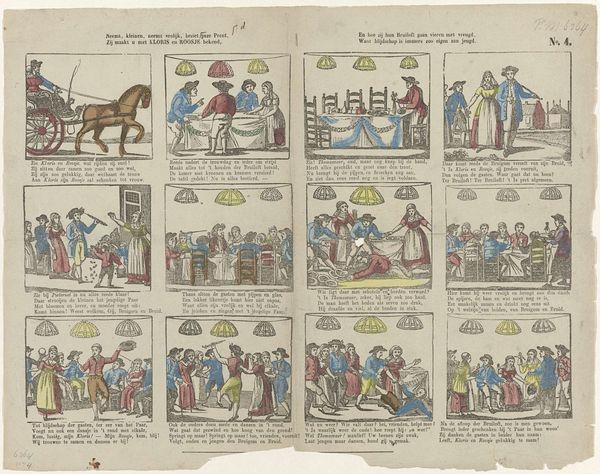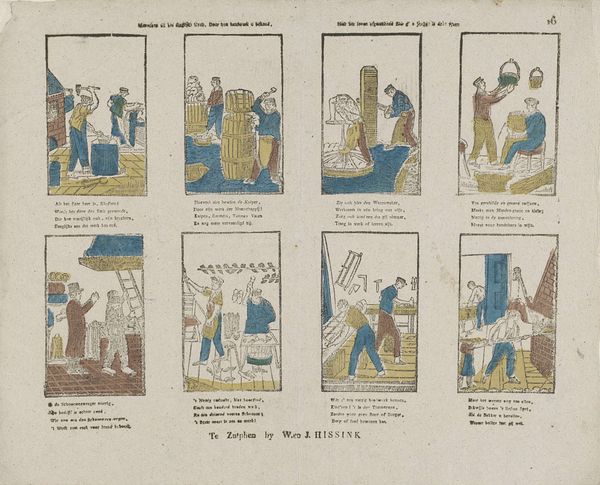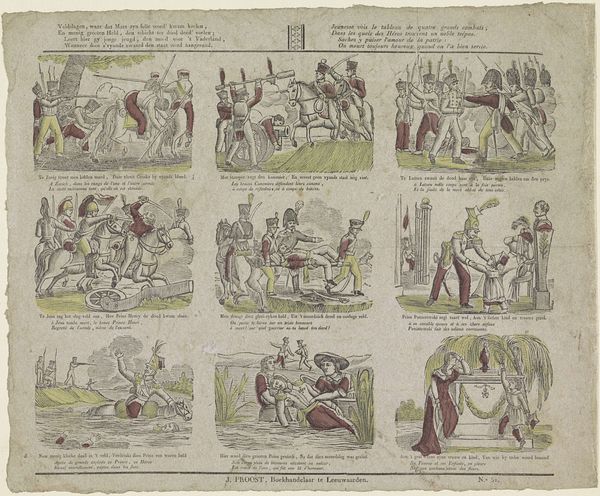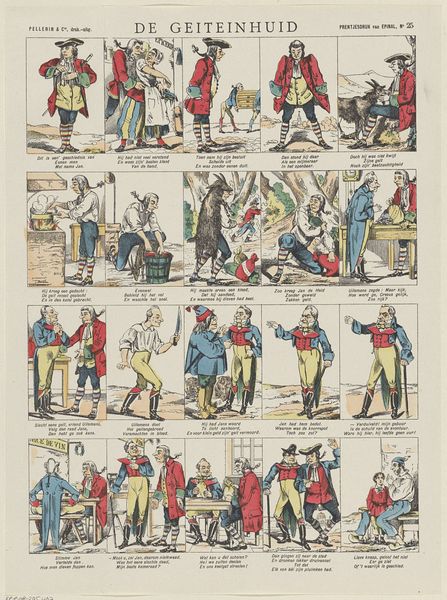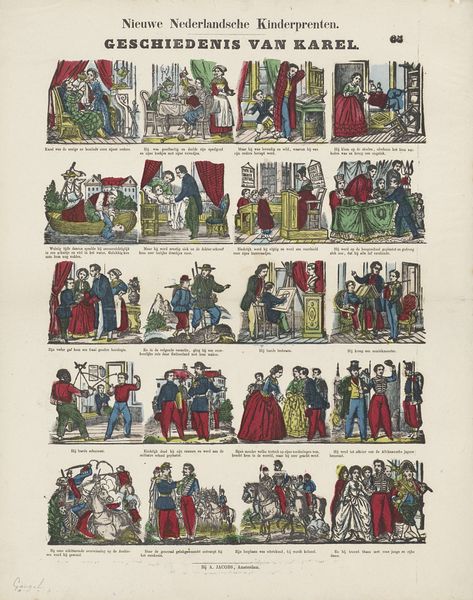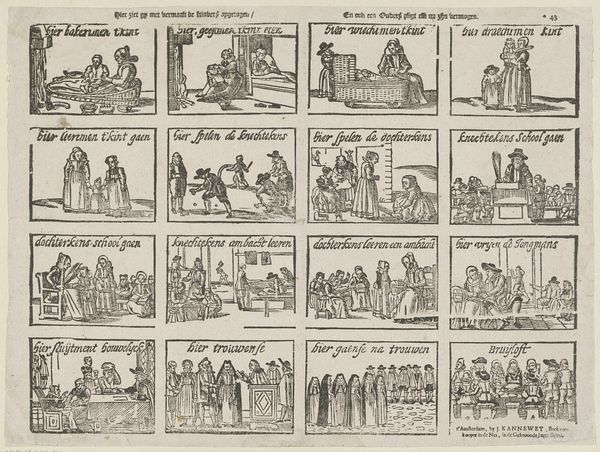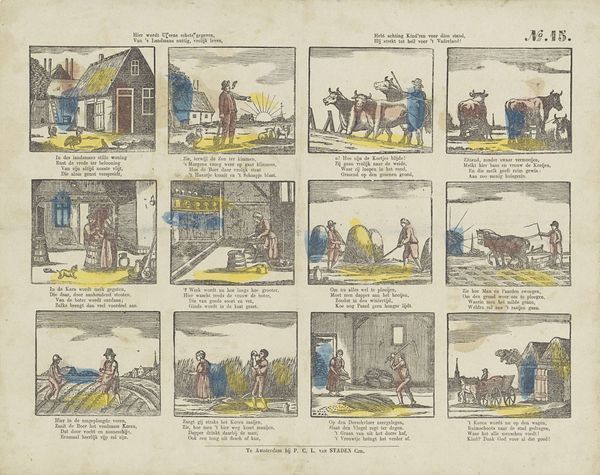
Neemt, kleinen, neemt vrolijk, beziet deze prent, / Zij maakt u met Kloris en Roosje bekend, / En hoe zij hun bruiloft gaan vieren met vreugd, / Want blijdschap is immers zoo eigen aan jeugd 1850 - 1870
0:00
0:00
graphic-art, print
#
graphic-art
#
comic strip sketch
#
quirky sketch
#
narrative-art
# print
#
sketch book
#
personal sketchbook
#
idea generation sketch
#
sketchwork
#
thumbnail sketching
#
comic
#
sketchbook drawing
#
genre-painting
#
storyboard and sketchbook work
#
sketchbook art
Dimensions: height 294 mm, width 374 mm
Copyright: Rijks Museum: Open Domain
This print, made by P.C.L. van Staden & Co., invites us to a wedding celebration through a series of twelve scenes. It’s an example of a process known as relief printing. This is where an image is carved into a surface, likely wood in this case, and then the remaining raised areas receive ink and leave an impression on paper. The linear quality of the print results from the carved lines, each carefully considered to depict figures and settings from the wedding story. The light touches of color suggest a hand-application process, perhaps using stencils to add the hues delicately to the final print. This type of print was most likely made for a wide audience, as it was a relatively inexpensive method of reproducing images. The multiple scenes across one sheet point to the efficiency of production, telling a story in a serialized format that could be quickly disseminated. Paying close attention to materials and the method of making allows us to think about how images like these played a vital role in circulating stories, shaping social values, and bringing art to a wider audience.
Comments
No comments
Be the first to comment and join the conversation on the ultimate creative platform.
